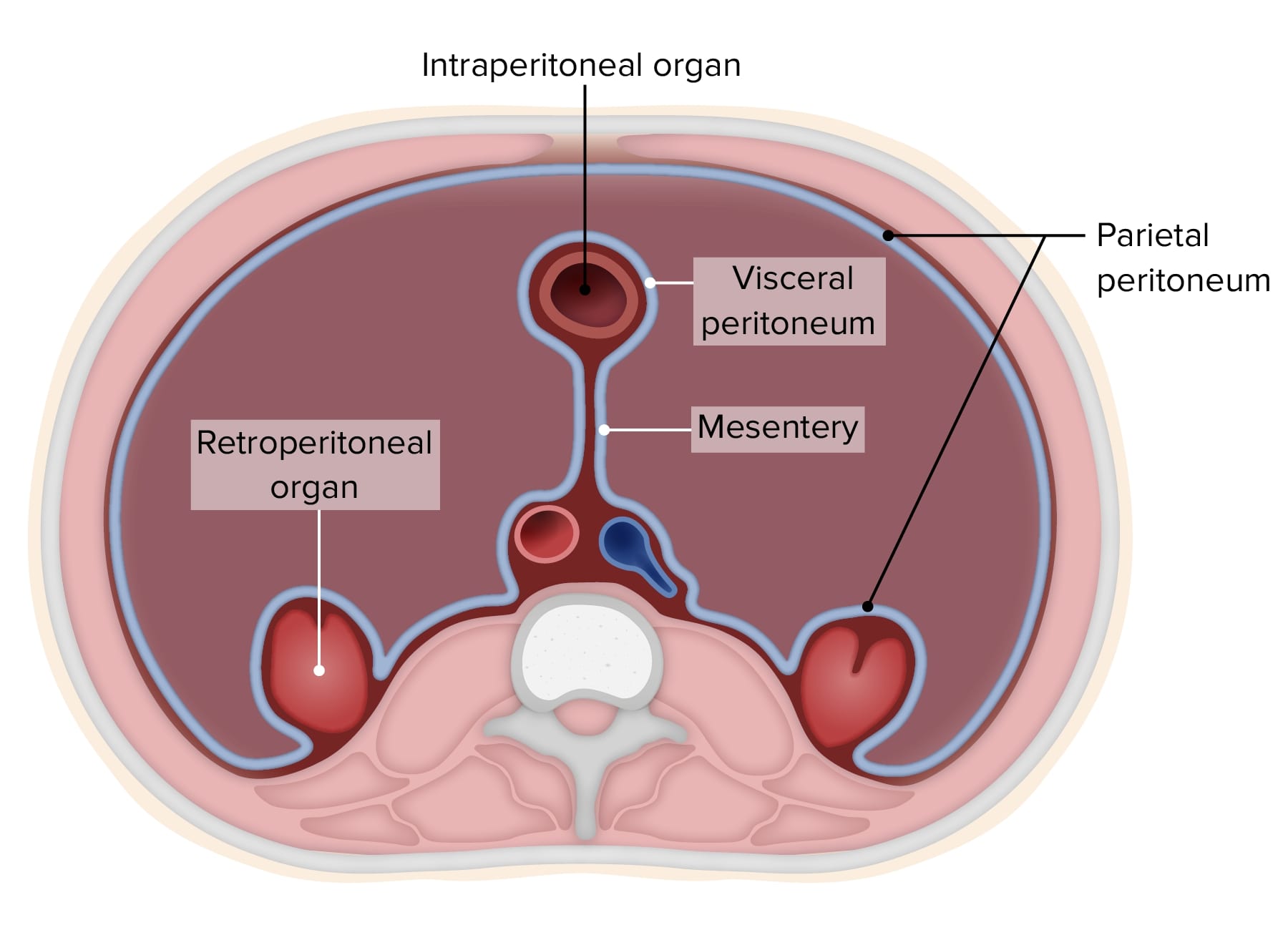Playlist
Show Playlist
Hide Playlist
Peritoneal Cavity
-
Slides Peritoneal Cavity.pdf
-
Download Lecture Overview
00:01 So now let's have a look at this again from slightly different perspectives. The peritoneum is quite complicated so it's helpful to look at similar structures from different angles and different views. Let's have a look again. The parietal peritoneum. 00:14 We can see it here lying in the abdominal wall. The transition between the parietal and visceral peritoneum is occurring here at the liver where we have the coronary ligaments. 00:24 And then you've got the visceral peritoneum lining over, in this case, the liver but lining over other organs. We can then see the connection of the peritoneum running towards the stomach. See it running over the stomach and then running down is the greater omentum. 00:39 We can then see it curving back up towards the posterior abdominal wall and then you can see it forming this sac, the lesser sac, in that space that's being created. So here we can see the lesser omentum. Directly posterior to it we have that space within the greater sac and we call that the lesser sac. Here we can see the greater omentum now curving back up over the transverse colon to the posterior abdominal wall. Here we can see it then going towards the transverse colon. We can see it then running over the posterior abdominal wall to leave as the mesentery and go to the small intestine. We can bring up the transverse mesocolon. We can bring up the mesentery. The parietal peritoneum will then extend along the posterior abdominal wall and it will line all of those pelvic organs. That outline we've just created is the greater sac and it's very much once you lift up the greater omentum of the stomach you can see your hand would be within the greater sac. 01:39 Here we can see what's known as the supracolic compartment of the greater sac and that is everything that sits above the transverse colon. So supracolic colon superior to the colon, a compartment superior to the colon. Obviously if we have supracolic, we'll have infracolic. And this is a compartment that sits inferior to the colon. The infracolic compartment. Let's finish off by adding in some other layers of peritoneum that are lining the posterior abdominal wall behind the stomach over the pancreas. We can see here lining the posterior surface of the stomach also feeding down now into the greater omentum and back over towards the pancreas and this region is the lesser sac. Hopefully you can appreciate how all of these aspects and these contorsions of the various organs very much based on embryological development can lead to various different foldings and ligaments and attachments and spaces of peritoneum. So here we can see the lesser sac and now we can see the connection between the lesser sac and the greater sac being the omental foramen. How you can pass between the lesser sac and the greater sac? Obviously fluid can pass through these 2 spaces.
About the Lecture
The lecture Peritoneal Cavity by James Pickering, PhD is from the course Peritoneum and Peritoneal Cavity.
Included Quiz Questions
Which statement regarding the mesentery is accurate?
- It contains blood vessels, nerves, and lymphatics.
- It is a single layer of tissue.
- It connects one organ to another organ.
- It is devoid of blood vessels.
- It does not allow the organ to move freely.
Which organ is present in the supracolic compartment?
- Liver
- Lungs
- Kidneys
- Heart
- Esophagus
Which structure separates the supracolic and infracolic compartments?
- Transverse colon
- Ascending colon
- Descending colon
- Diaphragm
- Stomach
Customer reviews
5,0 of 5 stars
| 5 Stars |
|
5 |
| 4 Stars |
|
0 |
| 3 Stars |
|
0 |
| 2 Stars |
|
0 |
| 1 Star |
|
0 |




